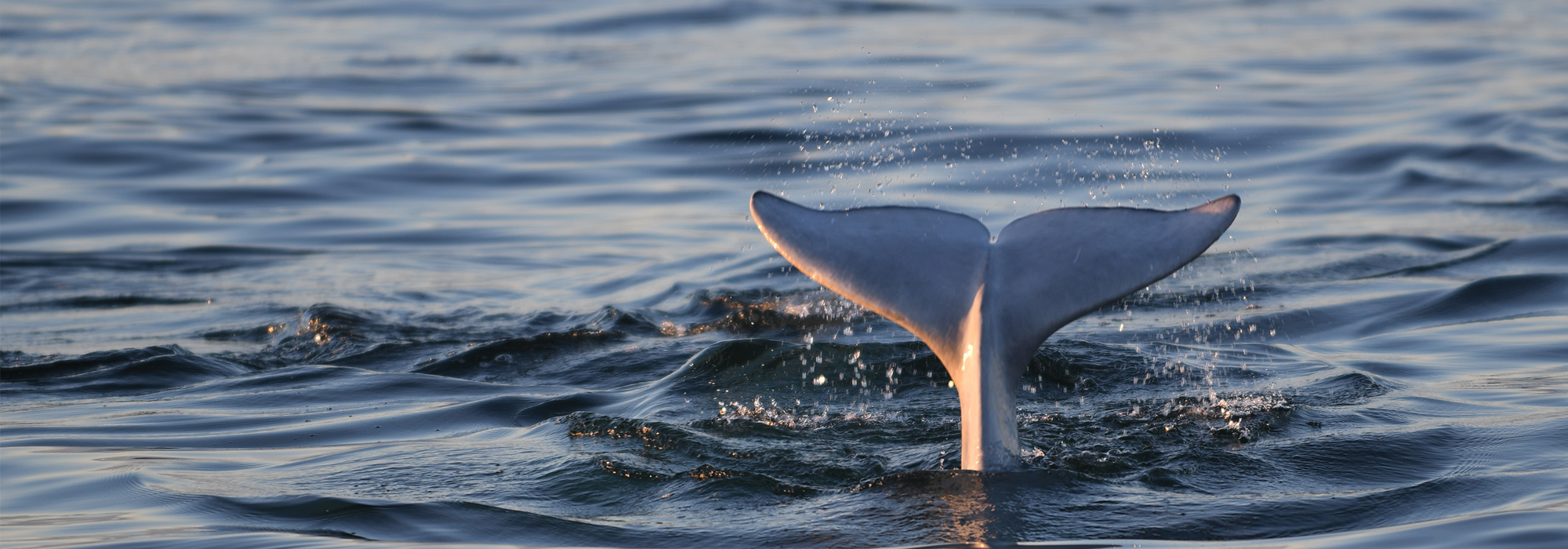
In the eternal struggle over powers between our national and provincial governments, we usually assume that each level will try to maintain or expand its powers at the expense of the other. But the federal government’s current attempt to pass an act protecting endangered species of wildlife presents the unusual spectacle of a government, in advance of any challenge, unilaterally abandoning the strongest grounds it possesses to justify legislation that would win it widespread praise and publicity.
The Species at Risk Act (SARA), or Bill C-5, which is currently making its way through the House of Commons, purports to set national standards for the protection of endangered species of wildlife through cooperation between the federal government and the provinces, with the federal role being essentially that of a backstop or safety net. The federal government justifies its role as an exercise in the federal criminal law power, which at first glance seems a constitutionally secure stance. However, the way in which it proposes to exercise criminal sanctions leaves it very vulnerable to constitutional attack. At the same time, Ottawa seems afraid to defend the bill on the more solid constitutional ground that protecting wildlife is a matter of national concern that can only be dealt with by a national government.
The federal government committed itself to pass endangered species legislation by signing the international Convention on Biological Diversity in the aftermath of the Rio Conference in 1992. Although polls have consistently shown overwhelming public support for such legislation, although a number of resource industries and agricultural interests have spoken in favour of federal action, and although most provincial governments have accepted the need for a federal safety net where a province has failed to act, the federal government has consistently been reluctant to bring in a comprehensive act which will protect all threatened or endangered species wherever they may be.
A first attempt in 1996-97 failed largely because neither the environmentalists who wanted legislation nor the resource-users who opposed it were satisfied with the government’s attempted compromise, and the bill finally died when an election was called. The second attempt was aborted by the early election last November. This third attempt is essentially the same as last year’s bill, with a heavy emphasis on cooperation with the provinces and on stewardship, and with some provisions for the federal government to act unilaterally when it thinks a province is not doing enough to protect a species.
There is, to be sure, considerable opposition to any effective legislation to protect endangered wildlife. Protecting the habitat of endangered species usually means restricting the logging, mining, road-building and other countless developmental activities that all Canadian provincial governments see as essential to their continuing prosperity. While the more sophisticated members of the resource industry community are careful to couch their opposition in the terms “We care as much as anyone for endangered species, but …” their bottom line is essentially that they will protect these species just so long as it does not cost them anything. Provincial governments share this concern, and in addition have a more political one: that protection of endangered species be considered an aspect of natural resource management, and thus a matter for provincial control. But some provinces have not even produced such legislation, and others have been conspicuously weak in enforcing the provisions they have passed into law, so there is a prima facie case for the federal government to set national standards.
It is true that to some extent we are still suffering from the straitjacket into which the Judicial Committee of the Privy Council, sitting in England but acting as Canada’s final court of appeal until 1949, placed on the federal grant of power in the British North America Act. The general power to make laws for the “peace, order and good government” (POGG) of Canada was most often treated by the JCPC as a kind of emergency power, to be used only in crises, while the provinces’ powers over “property and civil rights” and matters of “a local nature” were expanded beyond anything the Fathers of Confederation had ever imagined possible. Still, we are not in quite as tight a straitjacket as some would argue. The POGG power has made something of a comeback in recent years, and some judges have even suggested that the treaty-making power, which the JCPC had rendered a nullity by saying it applied only to treaties made by “the Empire,” could be revived as a federal power. The Canadian Bar Association has argued in successive briefs since 1996 that federal legislation protecting endangered species would “most likely” be valid under POGG, whether or not these species inhabited federal lands or other properties, and nearly all experts in constitutional law share this view.
Any act to protect endangered animals and plants will necessarily touch on areas of jurisdiction claimed by the provinces, specifically property rights and control over natural resources. Canadian courts have been well aware of this, and the Supreme Court has set out a series of rules which stipulate the conditions under which the federal government can use its general power to make laws for the peace, order and good government of Canada, even where this affects an area of provincial power. The most basic of these rules are that a matter must be of “national concern,” and that its subject matter must possess a “singleness, distinctiveness, and indivisibility” that distinguishes it from any provincial concern covering the same substantive area.
There can be little question that endangered species legislation meets these tests. The fact that Canada and many other countries have signed a Convention on Biological Diversity implies that protecting animal and plant species from extinction is a matter of national or even international concern, while the singling out of this area for its own convention makes clear its distinctiveness. Furthermore, as noted, several provinces have not even passed legislation protecting endangered species within their own jurisdictions, and even if they did have the will to do so, they have no power to protect, for example, an eastern cougar or a piping plover that strays outside their boundaries. To rely solely on the provinces to protect endangered species would therefore leave large gaps in the legal shield. This seems to be generally recognized: Apart from the self-serving claims of some resource industry groups that the provinces could handle protection of endangered species satisfactorily, there have been no serious arguments against the need for a federal role in this area.
Representatives of the federal Department of Justice, however, have asserted before the Commons committee studying Bill C-5 that they justify the bill on the basis of the federal power to make criminal law, and that they do not agree with the Bar Association and other constitutional experts who have said that POGG could be used. Asked recently by the committee to comment on Justice’s stand, a noted constitutional authority, Professor Dale Gibson of the University of Alberta, observed that he was not aware of anyone outside the Department who agreed with it.
The major risk in the Department’s reliance on criminal law is that it opens the prospect of a more serious constitutional challenge than using POGG would. Criminal law is a very blunt instrument which does not lend itself to the precise and varied responses required to deal with specific species’ needs. Bill C-5 provides for potentially severe penalties: imprisonment for up to five years and fines of up to $250,000 for individuals and up to $1,000,000 for corporations, with a possible doubling of these for repeat offences. Apart from the minimal likelihood that a court would ever impose such severe sentences, the use of criminal sanctions may not be compatible with the Charter of Rights and Freedoms. Under the Charter, the “principles of fundamental justice” require that an individual (or corporation) enjoy liberty unless convicted “according to law” of “a specific offence.” Our courts have held that to be valid within the framework of the Charter a criminal offence has to be clearly set out and applied consistently.
Bill C-5’s long list of discretionary powers leaves open many questions about when an offence has been committed. While Sections 32 and 33 declare it an offence to destroy an endangered or threatened species, or its residence, which species these are and when they may be protected is left largely to the Minister and his department’s regulations. The Cabinet “may” establish a list of species at risk on the recommendation of the Minister, who only need “take into account” the advice of a scientific advisory panel (section 27). If a province is not adequately protecting a species at risk, the Minister “must” recommend that Cabinet act to prevent harm to the species or its “residence,” but only if “in his opinion” the laws of the province do not provide protection—and the Cabinet “may” act (Section 34). The Minister “may” recommend that Cabinet protect “critical habitat” (defined as “the habitat that is necessary for the survival or recovery of a listed wildlife species”), but only on “federal lands,” and Cabinet “may” (or may not) choose to act. Perhaps the most sweeping discretion lies in Section 97(2), which states that “a regulation … may prescribe which of its provisions may give rise to an offence” (emphasis supplied).
Critics will argue that such wide discretion gives the government plenty of room to avoid a politically painful action and leaves little assurance that species will be protected. But perhaps an even greater danger is that if the Minister does act, his action will be challenged as contrary to the Charter—and the courts are very likely to uphold the challenge.
The proposed law is placed in even greater jeopardy by the way in which it applies a civil law concept of liability to offences, while insisting that these offences are criminal in nature. Section 100 provides that “due diligence is a defence” for a person charged with harming an endangered species, while Section 102 says that in sentencing courts should consider whether the offence was committed “intentionally, recklessly, or inadvertently.” These are concepts widely used in civil law, where a person can be punished simply by virtue of having committed an offence whether he was aware of it or not (for example, failing to file an income tax return on time), but at the same time can defend himself by showing that he exercised “due diligence,” or an appropriate level of care to avoid the offence. Furthermore, the finding of guilt or innocence is based on a balance of probabilities. A criminal charge, by contrast, generally requires the prosecution to prove beyond a reasonable doubt that the defendant had committed the offence. It would be a major shift in our laws for any court to apply civil standards of guilt to a charge which the government insists is criminal.
In short, the government seems to have placed itself in a dilemma. If it persists in claiming that Bill C-5 is within federal jurisdiction on the grounds that it imposes criminal sanctions, it risks having these sanctions found in violation of the Charter of Rights and Freedoms on the grounds that they are too uncertain and that the means chosen to uphold them are inappropriate. If, on the other hand, it tries to impose civil penalties, its own lawyers have already told it that it has no right to do this.
To be fair, the Justice Department may be justified in claiming that the government cannot act under the federal treaty-making power. Here it faces the problem that we have never yet tried to break out of the straitjacket bequeathed us by the Judicial Committee of the Privy Council, which interpreted the federal power to commit Canada through international treaties as a power which only could be exercised by “the Empire,” despite the fact that by the time it made this ruling Canada had acquired its own treaty-making power. Justice’s timidity is much less understandable, however, in light of the possibility of imposing civil penalties under the peace, order and good government clause, which would allow the federal government to protect all endangered species, not merely those that are aquatic, migratory, or live on federal lands such as parks and military reserves.
What, then, should the government do? Since the whole purpose of the legislation is to prevent life forms from becoming extinct, and since this requires a wide range of actions, all levels of government, as well as private citizens and corporations, need to be involved. The federal government, wisely, has put considerable emphasis on “stewardship,” and on cooperating with other governments and with private organizations and individuals. However, as a backstop for such agreements, it does need the power to deal with cases in which an individual or corporation simply refuses to accept a constraint on its activities. And where a province lacks either the ability (because a species crosses provincial boundaries) or the will to act the national government needs to step in.
How best can the federal government justify its backstopping role? The bill should be seen as involving three levels of action, with appropriate incentives for each. The first level, cooperation among governments and interested private parties to act as stewards protecting an endangered species, relies more on negotiating skills than sanctions. Private individuals such as ranchers have already shown through such actions as saving the burrowing owl that for the most part they are quite willing to protect endangered species on their land. What needs strengthening here are the provisions for ensuring that all the costs do not fall on the individual landowner. Some kind of stewardship fund, not totally dependent upon ministerial discretion, might be a sufficient incentive.
The second level could involve some system of administrative penalties for companies (and perhaps individuals) whose actions jeopardized the survival of species, whether intentionally or not. (An example might be the spraying of pesticides which killed rare frogs or salamanders.) While these penalties would not have the stigma of a criminal charge, the combination of their impact on a company’s bottom line and possible adverse publicity would likely have a substantial deterrent effect—and guilt would be easier to establish than under a criminal charge. Such regulations have to be defended not under the criminal law power, where there is a serious risk that they will be struck down by the Charter, but under the general power to act in matters of national concern, backed up by the secondary argument that the Canadian government, as the successor to the treaty-making power of “the Empire,” has bound itself to protect endangered species under the Convention on Biological Diversity. They could also be handled through an administrative process, such as a quasi-judicial tribunal, which would allow a quicker resolution than our overcrowded courts. Finally, for flagrant and wilful offences (say, a company which tries to open a strip mine on an endangered species’ habitat, even after being warned that the area is the species’ breeding ground) the criminal law sanctions of the present bill could be used, provided that the offences were clearly spelled out and the government was prepared to act in a consistent manner. While such cases would likely be uncommon, the existence of these sanctions would doubtless serve to keep many potential offenders from acting.
An approach which sets out these different strategies would have the advantage over the present approach that if the courts were to strike one part down, be it the civil actions under POGG or the criminal prosecutions for violating the Charter, the rest of the bill would still survive.
Some cynics suggest that the current bill has been deliberately designed to fail, that the government really does not want such legislation and thus has framed it so that the courts will strike it down. This does seem a bit far-fetched; I doubt any government really wants to lose a constitutional fight in the courts. A more significant possibility is that the federal government is so fearful of provoking quarrels with Alberta and Quebec that it shies away from any risk that the peace, order and good government clause might be restored to the role the Fathers of Confederation intended. But if this is the case, it is hard to see why the government included a discretionary power (in Section 34) which allows it to protect a species anywhere if the relevant province fails to do so (a provision which probably will have to rely on POGG or the treaty power). No province that distrusts the federal government is likely to have its fears allayed by the wording of this section, which quite clearly allows the federal Cabinet to act to protect any species even one that lives entirely on provincially controlled lands.
The most plausible, but also most worrisome explanation is that the Department of Justice is so unwilling to risk losing a battle over POGG that it simply has overlooked the greater danger posed by its use of the criminal law power. One can, to be sure, avoid losing a battle in the short term by running away; but where does this leave the national government in the longer term? We could eventually wind up with a Cheshire cat state, possessing a name and a flag, but no national powers of any substance. In any case, Canada is doubly ill-served by the federal government’s approach: first, because endangered species will not be assured the protection they need, and second, by Ottawa’s failure to assert its ability to act in a matter so clearly of national concern.
Photo: Shutterstock






